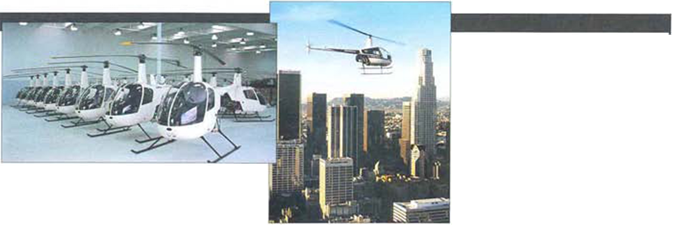Mi-2 ‘Hoplite’
• Polish-built light helicopter • Soviet design • More than 5000 built

 Designed in Russia by the Mil bureau but built in Poland by PZL at its Swidnik factory, the Mi-2 was the world’s first light, twin-enginod helicopter. The first prototype flew in September 1961, and since production startod in 1965 того than 5000 have been delivered. They have been used for a range of missions by civil and military operators in many countries. As well as developing the Mi-2, PZL has also launched the improved W-3.
Designed in Russia by the Mil bureau but built in Poland by PZL at its Swidnik factory, the Mi-2 was the world’s first light, twin-enginod helicopter. The first prototype flew in September 1961, and since production startod in 1965 того than 5000 have been delivered. They have been used for a range of missions by civil and military operators in many countries. As well as developing the Mi-2, PZL has also launched the improved W-3.
PZL-Swidnik (Mil) Ml-2 ‘HOPLITE*
![]()
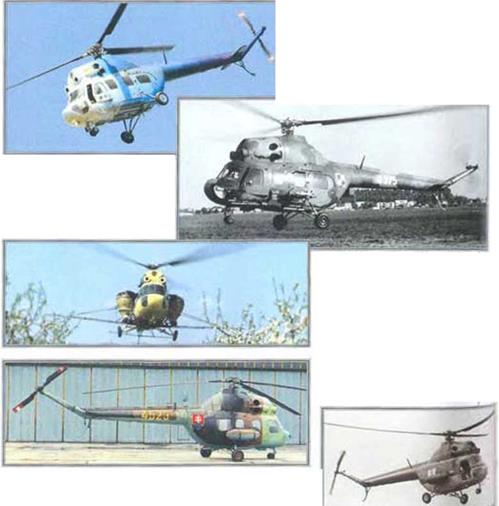
▲ Still in Russian use
Unvtod Mi-2 production contimied into the 1990s. This gaudily painted Hophte’ was one of a number that remained m Russian servico until 1991.
▼ Missile-toting МІ-21ЖР
The MI-2URP. which dates from 1976. is among a number of armed ‘Hophte’ variants. It may be httod with up to four 9M1-1M Malyutka (known as AT-3 ‘Sagger’ to NATO) air-to-surfaco missiles.
4 Agricultural variant
Among the dozen Mi-2 variants was an agricultural vorsion with externally-mounted hoppers and spray booms.
▼ External fuel tanks
All Mi-2 variants can be fitted with external fuel tanks, each of 250-1 (66 gal.) capacity. Carrying a full load range is limited to 170 km (106 mi)
FACTS AND
► In the lato-1970* PZL developed on oxport conversion of the Mi-2, called Kama (Kittyhawk). with two Allison engines.
► Mi-2s still servo with ex-Warsaw Pact countries, plus Nicaragua and Syria.
► Chronologically, the Mi-2 appeared in production after the Mi-4 and MI-6.
FIGURES
► PZLs W-3 Sokol (Falcon), which flow In 1979, was based on the MI-2 but hod new engines, rotors and a larger cabin.
► East Germany used Mi-2s for artillery spotting and electronic warfare.
► Civil versions include air ambulance.
TV rolay, agricultural and survey models.
|
|||||||||||||
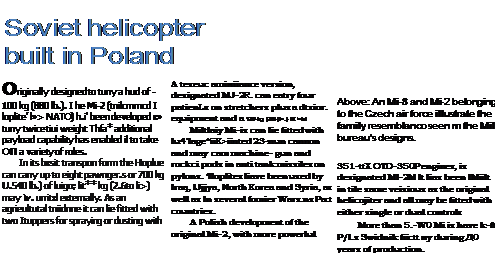 |
|||||||||||||
|
|||||||||||||
|
|||||||||||||
|
|||||||||||||
|
|||||||||||||
|
|||||||||||||
|
|||||||||||||
|
|||||||||||||
|
|||||||||||||
|
|||||||||||||
|
|||||||||||||
|
|||||||||||||
|
|||||||||||||
 |
|||||||||||||
|
|||||||||||||
|
|||||||||||||
|
|||||||||||||
|
 |
||||||||||||
|
|||||||||||||
|
|||||||||||||
|
|||||||||||||
|
|||||||||||||
|
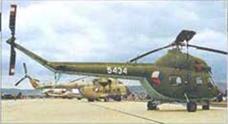



Robinson
• Two-seat light helicopter • Cheap to own • Private and business
For the beginner and the professional alike the Robinson R22 is the right helicopter. Since 1975, thousands of student pilots have oarnod their rotary-wing qualification flying the R22. Though it receives little publicity, the R22 is a popular, lightweight general aviation helicopter that is also economical. Few helicopters are tailorod for people of modest means—but this aircraft is. making it the ideal training tool.
Robinson R22


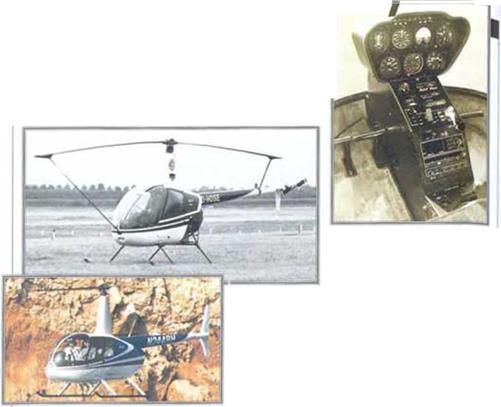 ▼ All tied up
▼ All tied up
Helicopter rotors can bo surprisingly tragilo. They must bo carefully anchored to tho fuselage to prevent windmilling on tho ground.
A Four-seat R44
The R44 is a four-seat version of tho R22 incorporating many now features such as an automatic engine clutch and a rotor brake.
 ◄ R22 on floats
◄ R22 on floats
Another version of tho R22 is the Mariner, which has mtlatablo floats and wheels for ground handling. Tho first examples delivered wore used for fish spotting from tuna fishing boats oft Mexico and Venezuela.
![]()
> It is ostimntad that ovor 13,000 student pilots have made their first holicoptor solo in this aircraft.
> Tho first R22 prototype flow on August 28, 1976, and tho second In 1977.
> Total production of the R22 hod oxcoodod 2,500 aircraft by 1995.
Desptto tho company’s small sizo, Robinson nchiovod n production rote of about 30 R22o per month.
► Tho Turkish army Is tho only military user of the R22, ns a basic flight tralnor.
>• Argentina’s police forces are acquiring R22s fittod with both floats and wheels.
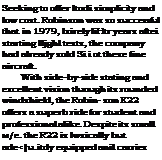

![]()
![]()
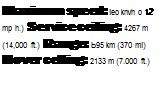
![]()
![]()
![]()

